
EVEN before your vet arrives on the yard to evaluate your horse, they are already syphoning through the information they know about the case, to guide their approach and custom fit their investigation to your horse’s individual needs.
It’s important to stress that pattern recognition is not a substitute for being thorough, or a way to cut corners. Rather, it is about applying knowledge and experience to investigate and treat efficiently, giving both the horse and the client the best possible experience in what can be a stressful situation. The more a vet can filter out the noise and red herrings, the more they can focus on the problem at hand.
How do we do that? Well, it starts with a story. Historytaking is as much an art as it is a science, but to extract vital information about a case you have to be able to obtain good-quality information to begin with. Refining and revising a differential list starts with recognising patterns, which can be breed, age and discipline specific.
Not only that, but geographical differences, topography and footing all play an important role in shaping the specific injuries that your horse may sustain. Recognising that a Shetland pony with an upward fixation of the patella may have concurrent luxation (dislocation) of the hip joint at the time of presentation, allows the vet to target diagnostics towards confirming or excluding this in the first instance, rather than progressing to targeted diagnostics and treatments of the stifle.
In comparison, an identical presentation in a young warmblood showjumper would immediately result in recognition of different patterns regarding exercise and fitness levels, where a primary diagnosis of hip luxation is very rare and this condition would in all likelihood not require exclusion, prior to investigation of the stifle itself and associated muscle groups.
This story is from the {{IssueName}} edition of {{MagazineName}}.
Start your 7-day Magzter GOLD free trial to access thousands of curated premium stories, and 9,000+ magazines and newspapers.
Already a subscriber ? Sign In
This story is from the {{IssueName}} edition of {{MagazineName}}.
Start your 7-day Magzter GOLD free trial to access thousands of curated premium stories, and 9,000+ magazines and newspapers.
Already a subscriber? Sign In

Gemirande provides 24-carat magic
Venetia Williams sparkles again in the December Gold Cup and jockey brothers dead-heat
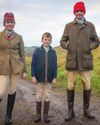
‘Happy hunting, everyone'
“The season for talks, dinners and parties has finally arrived for Tessa Waugh, whose distress about the snags of middle age fades away with some rousing festive spirits
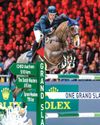
'Monaco deserved this victory
Seemingly destined always to play the bridesmaid’s role, Harrie Smolders’ great partner Monaco finally tops an incidentpacked Rolex grand prix

'It had to end sometime'
The closure of beloved Hampshire saddlery Calcutt Sons is a loss to the hunting and wider equestrian worlds, as Octavia Pollock reports

'You couldn't want for more
The Ludlow's peaceful country makes for a day in \"hunting paradise\"
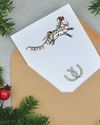
The greatest gift of all
Christmas is fast approaching and while we all like a bit of tinsel, the festive season is also a perfect time for giving to a horse charity. Niki Hinman finds out some of the options

Winter him well
A horse's winter routine can differ dramatically from his summer structure but what’s the knock-on effect? Ellie Hughes asks vets how to optimise routine management for the season
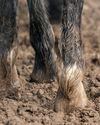
Neat feet
Excellent hoof care is a year-round concern but the winter months present their own problems. Richard Stephenson MRCVS explains the seasonal challenges afoot and how to stay one step ahead
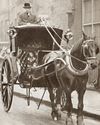
In bygone days
Modern vets have much scientific knowledge behind them, but what about their forebears? Kieran O’Brien MRCVS opens up the world of Victorian vets in London
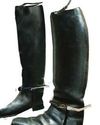
'When I joined the Pony Club it was just two boys and 48 girls'
Pepsi Kohler on being delightfully outnumbered by girls in the Pony Club, a leg-up from a royal and the H&H advert that changed his life